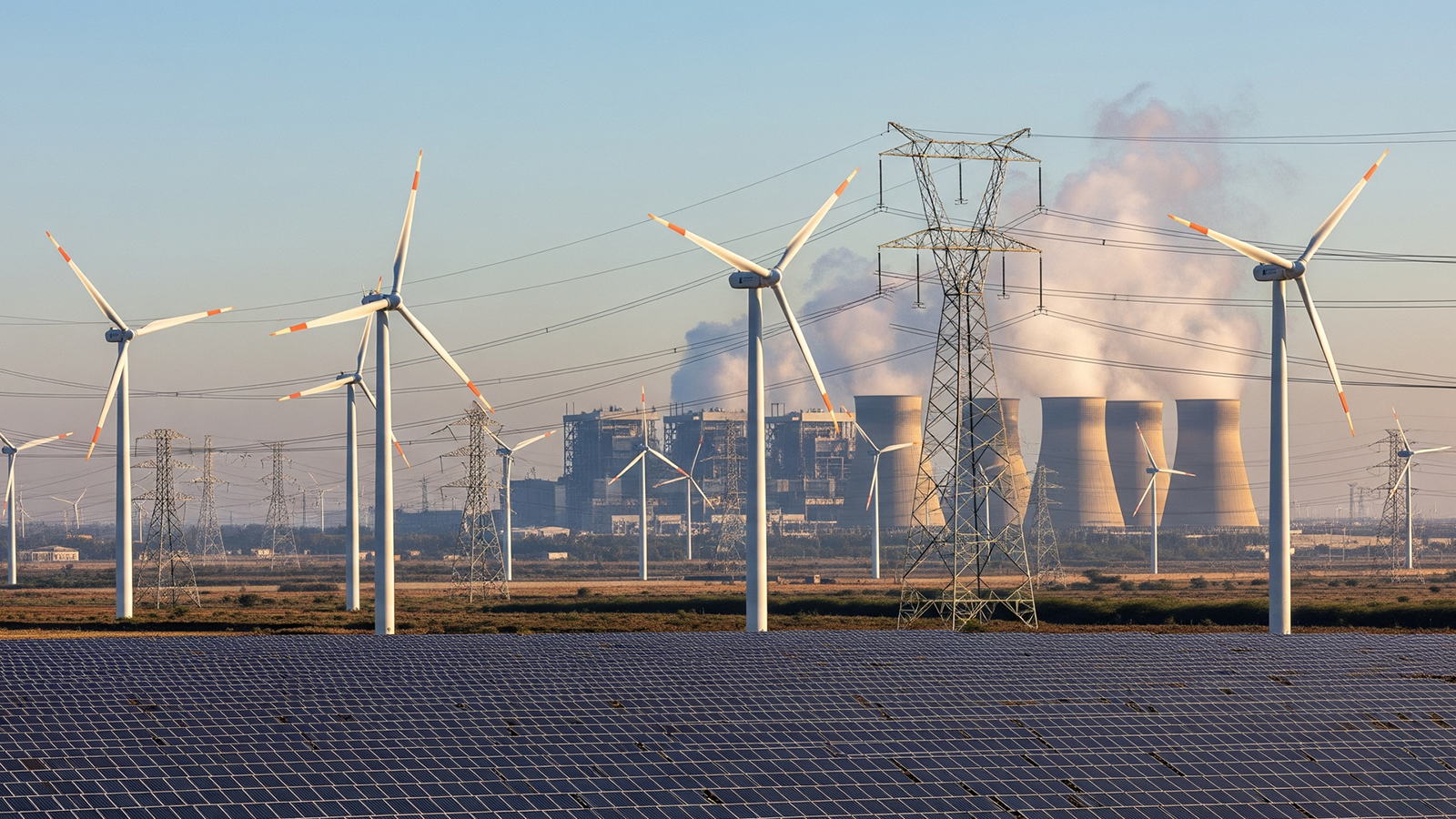Adani Plans Mega $60 Billion Push Into India’s Energy Future
India’s fastest-growing electricity market is opening up trillion-dollar opportunities — and the Adani Group plans to seize a big share with a $60 billion push into renewables, transmission, and power generation by 2032.

The Adani Group, led by industrialist Gautam Adani, has announced one of its biggest investment plans ever. Over the next seven years, up to the financial year 2031-32, the group intends to put in around USD 60 billion (over ₹5 lakh crore) into India’s power sector. This money will be spread across renewable energy projects like solar and wind, traditional thermal power, and the huge network of transmission lines that carry electricity to homes and businesses.
One of the most ambitious parts of the plan is a massive bet on renewable energy. Today, Adani Green Energy Ltd (AGEL) already runs solar and wind farms with a combined capacity of 14.2 gigawatts (GW). By 2030, the group wants to more than triple that to 50 GW. To achieve this, it will spend USD 21 billion.
To provide some perspective, 1 GW of power can supply electricity to about 750,000 Indian homes. So, scaling up to 50 GW would mean enough clean energy to power tens of millions of homes, schools, hospitals, and factories.
It is not enough to just generate power – the transmission backbone has to be strengthened if that power is to be transported reliably. This is where Adani Energy Solutions Ltd (AESL) comes in. The company, renamed as AESL in 2023 from ATL (Adani Transmission Ltd), already operates nearly 19,200 kilometres of high-voltage transmission lines, which carry electricity across states. By 2030, AESL plans to stretch that to 30,000 kilometres.
The group will invest USD 17 billion in this space, which also covers smart meters for homes and businesses, as well as district cooling solutions to reduce energy waste. Without such investments, India’s fast-growing demand for electricity cannot be met in a stable way.
Even though renewable energy is the future, conventional coal-based power will still play an important role in India. Adani Power Ltd (APL), the country’s largest private thermal power producer, will invest USD 22 billion by FY32. This will raise its generating capacity from 17.6 GW in FY25 to nearly 42 GW by FY32.
APL already has plants spread across Gujarat, Maharashtra, Karnataka, Rajasthan, Chhattisgarh, Madhya Pradesh, Jharkhand, and Tamil Nadu. It also runs a solar project in Gujarat. The company maintains that coal remains the “backbone” of India’s electricity supply, especially for handling peak demand and balancing fluctuations in renewable energy.
Explaining why it is making such a huge investment, the Adani Group points to the big picture: India is the world’s fastest-growing electricity market. The country’s installed power capacity is expected to more than double in just seven years – from 475 GW in FY25 to 1,000 GW in FY32. That growth itself opens up investment opportunities worth over USD 500 billion.
- Renewables alone will require over USD 300 billion, as capacity expands from 172 GW to 571 GW by FY32.
- Thermal power will also grow, from 247 GW to 309 GW by FY32, requiring about USD 91 billion of investment.
- The transmission network will expand from 494,000 km today to 648,000 km by FY32, needing USD 110 billion.
Planners have pointed out that India’s energy transformation is not just about moving to clean power, but also about building an entire ecosystem to keep up with the world’s most rapid demand growth.
For ordinary Indians, this investment means several things:
- More reliable electricity supply, with fewer outages.
- Faster expansion of clean energy, reducing dependence on imported fuels.
- Growth in infrastructure, which will directly create jobs and indirectly support industries.
- India’s positioning as a global leader in renewable energy deployment.
By committing such a large sum, the Adani Group is essentially betting that India’s energy needs will remain the most attractive investment opportunity of this decade. If these plans materialise, the Group will not just be one of the largest private players in the global power market – it will also be among the biggest contributors to India’s green energy transition.